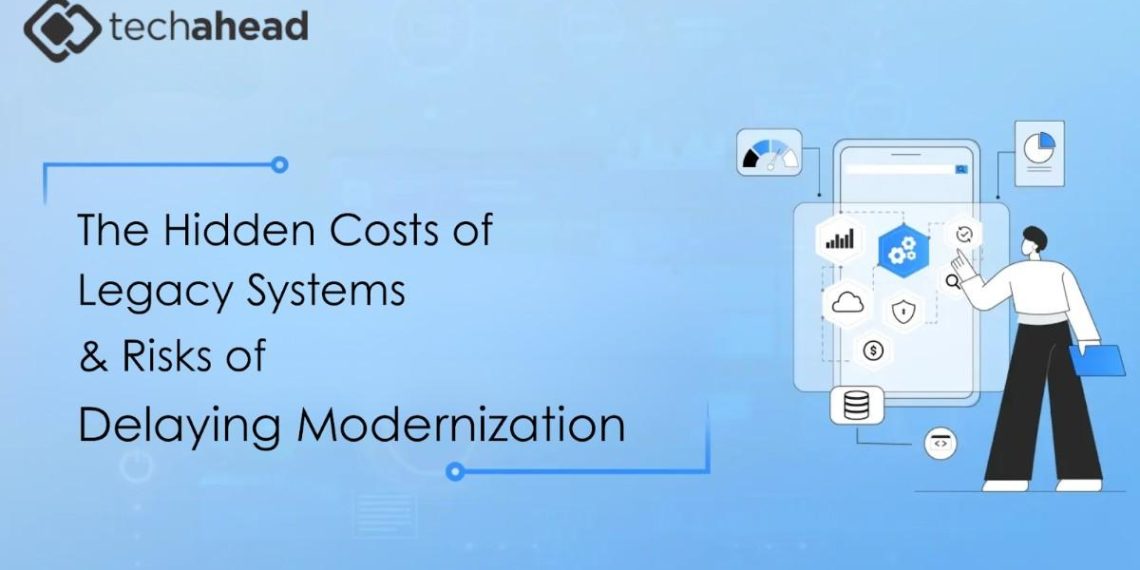Legacy systems feel safe. They have kept operations running for years and many teams know them well. Familiarity helps until it starts to slow you down. As newer platforms mature, older infrastructure shows its age. Little issues surface first, then bigger ones.
The business still functions, but the gap between what you have and what you need keeps widening. This blog will explain the hidden financial, operational, and security costs of holding on to outdated systems for too long.
We will also share the risks that appear when action is delayed, and why modernization belongs on the business agenda, not only the IT agenda.
What Makes Legacy Systems So Expensive?
You can see the obvious bills: license renewals, vendor support, a hardware refresh now and then. The harder costs to spot sit in daily work.
Without a clear plan for enterprise legacy system modernization, small leaks turn into a steady drain:
- Employees lose minutes on slow logins, frozen screens, and awkward interfaces, multiplied across teams and months
- Minor outages ripple through customer support, finance, or operations and turn simple tasks into queues
- Change becomes hard, so new market needs wait for the next quarter or the one after that
- IT spend grows to keep the old setup alive rather than to fund new capability
Skipping upgrades looks like saving money. In practice, it pushes cost into lost time, slower delivery, and missed targets.
Missed Opportunities And Slower Growth
Legacy platforms cap your speed. A new customer portal, a CRM link, or a real-time dashboard can take months when it should take weeks. During that delay, competitors launch, clients switch, and teams make short-term workarounds that linger for years.
Goals such as automation, remote work at scale, or live analytics depend on responsive systems. Slow and patchy foundations turn those goals into slideware rather than shipped work.
The Talent Drain
Many older platforms rely on languages and frameworks few people now learn. A small group holds the knowledge. If one of them leaves or retires, support gets risky. New hires prefer current stacks, so onboarding stretches out and morale dips.
Over time, organizations stay with what they have because no one wants to touch the internals. That is not stability. That is fragility wearing a friendly face.
What Attackers See That You Do Not
Unpatched software invites trouble. Outdated protocols, weak encryption, and permissive access rules open doors you do not want open. The result can be ransomware, data loss, or failed audits.
In sectors such as finance or healthcare, these gaps are more than risky. They can end contracts, stop services, and harm people who trust you with their data.
Why Delays Make Modernization Tougher
Delay adds knots you later have to untie. Quick fixes turn into “the way we do things,” and no one questions them. Side systems spread across spreadsheets and personal devices. Teams settle into habits shaped by the old platform, so every change hinges on something else.
Many organizations start the journey only when failure feels close and options are limited. By then, timelines are longer and migration paths are narrower.
A Phased Approach That Actually Moves
Modernization does not have to be in a single phase. A steady plan works:
- Rebuild the customer-facing parts first so value is visible early
- Add APIs to separate front ends from back-end services, then refactor service by service
- Move targeted workloads to the cloud where that makes sense for cost and resilience
- Replace manual steps with focused mobile apps and clear approvals
Local Expertise Matters
If mobile experiences sit in your plan, local partners help. A seasoned mobile app development company in Toronto or your preferred ones can bring practical experience with legacy integrations and an understanding of privacy and data rules. It also helps when priorities change or when a migration needs hands-on time with your teams.
The real advantage is the connection between new interfaces and existing systems. Done well, mobile apps improve workflows without breaking the parts that must keep running.
Final Takeaway
Legacy systems rarely fail in a single moment. They shave performance day by day and make your organization slower, less secure, and easier to outpace. While waiting is comfortable (because the screens still come up and the reports still run) – the true cost is lost time, missed launches and an increase in support bills.
Modernization requires focus and effort but pays back in clarity, speed, and safer operations. Start small. Pick one customer facing journey or a high friction internal process, set a clear outcome, and move it forward. Each fix makes the next step easier, until the old weight is gone and your systems actually match how your business works today.







